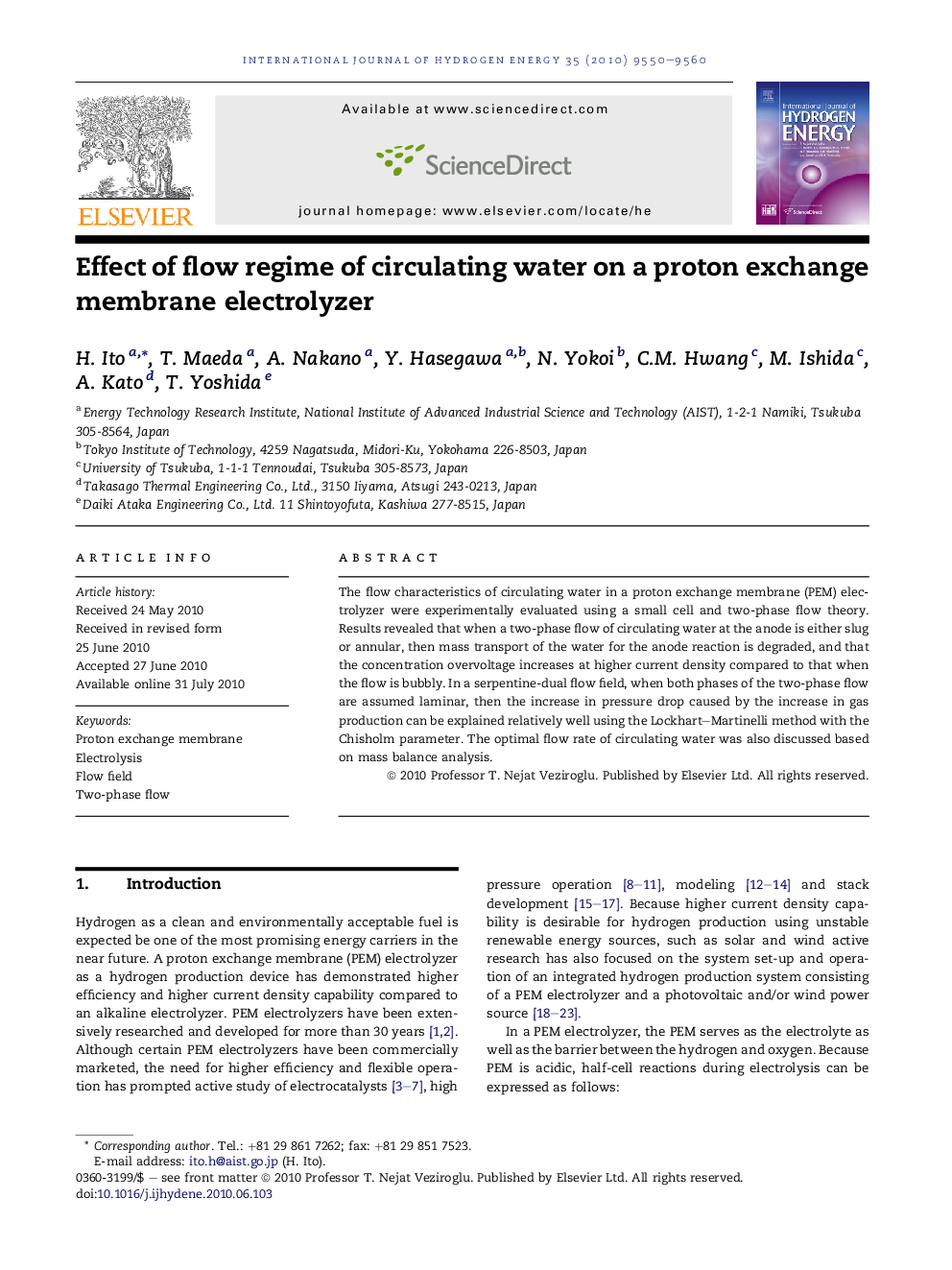| Article ID | Journal | Published Year | Pages | File Type |
|---|---|---|---|---|
| 1280244 | International Journal of Hydrogen Energy | 2010 | 11 Pages |
The flow characteristics of circulating water in a proton exchange membrane (PEM) electrolyzer were experimentally evaluated using a small cell and two-phase flow theory. Results revealed that when a two-phase flow of circulating water at the anode is either slug or annular, then mass transport of the water for the anode reaction is degraded, and that the concentration overvoltage increases at higher current density compared to that when the flow is bubbly. In a serpentine-dual flow field, when both phases of the two-phase flow are assumed laminar, then the increase in pressure drop caused by the increase in gas production can be explained relatively well using the Lockhart–Martinelli method with the Chisholm parameter. The optimal flow rate of circulating water was also discussed based on mass balance analysis.
